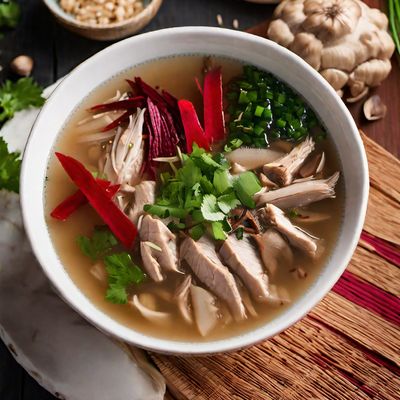
Ingredient
Longans
The Exotic Sweetness of Longans
Longans are small, round fruits with a thin, brownish-yellow skin that is easily peeled away to reveal a translucent, jelly-like flesh. The flesh is sweet and succulent, with a flavor reminiscent of lychee and grapes. The texture is soft and slightly chewy, providing a satisfying bite.
Origins and history
Longans are native to Southeast Asia and have been cultivated for centuries in countries such as China, Thailand, and Vietnam. They hold cultural significance in these regions and are often used in traditional desserts and herbal remedies.
Nutritional information
Longans are low in calories and fat, making them a guilt-free indulgence. They are also a good source of vitamin C and contain small amounts of other essential nutrients such as potassium and magnesium.
How to select
When selecting longans, look for fruits that have a firm skin without any blemishes or soft spots. The skin should be slightly translucent, indicating that the fruit is ripe. Avoid fruits with a dull or wrinkled appearance, as they may be past their prime.
Storage recommendations
To maintain the freshness of longans, store them in a cool, dry place or in the refrigerator. They can be kept at room temperature for a day or two, but refrigeration helps prolong their shelf life. It is best to consume longans within a week of purchase for optimal flavor and texture.
How to produce
Longan trees can be grown in tropical and subtropical regions, preferably in well-drained soil with ample sunlight. They require regular watering and protection from strong winds. With proper care, longan trees can bear fruit within 3 to 5 years.
Preparation tips
Longans can be enjoyed fresh as a snack or added to fruit salads, desserts, and beverages. They can also be used in savory dishes such as stir-fries or paired with meats for a sweet and savory contrast.
Substitutions
Lychees can be used as a substitute for longans, as they share a similar flavor profile and texture. However, the taste may vary slightly.
Culinary uses
Longans are commonly used in Asian cuisines, particularly in desserts such as sweet soups, jellies, and drinks. They are also popular in fruit-based desserts like pies, tarts, and sorbets.
Availability
Longans are commonly cultivated in Southeast Asian countries such as China, Thailand, Vietnam, and Malaysia. They are also grown in other tropical regions around the world.
More ingredients from this category
Recipes using Longans

Heusuppe with a Malaysian Chinese Twist
Malaysian Chinese Herbal Soup with a European Touch

Taiwanese-style Chicken Soup
Savory and Nourishing Taiwanese Chicken Soup

Sishen Soup with Nourishing Herbs
Healing Elixir: Sishen Soup to Nourish Your Body and Soul

Black Chicken Herbal Soup
Healing Delight: Black Chicken Herbal Soup
